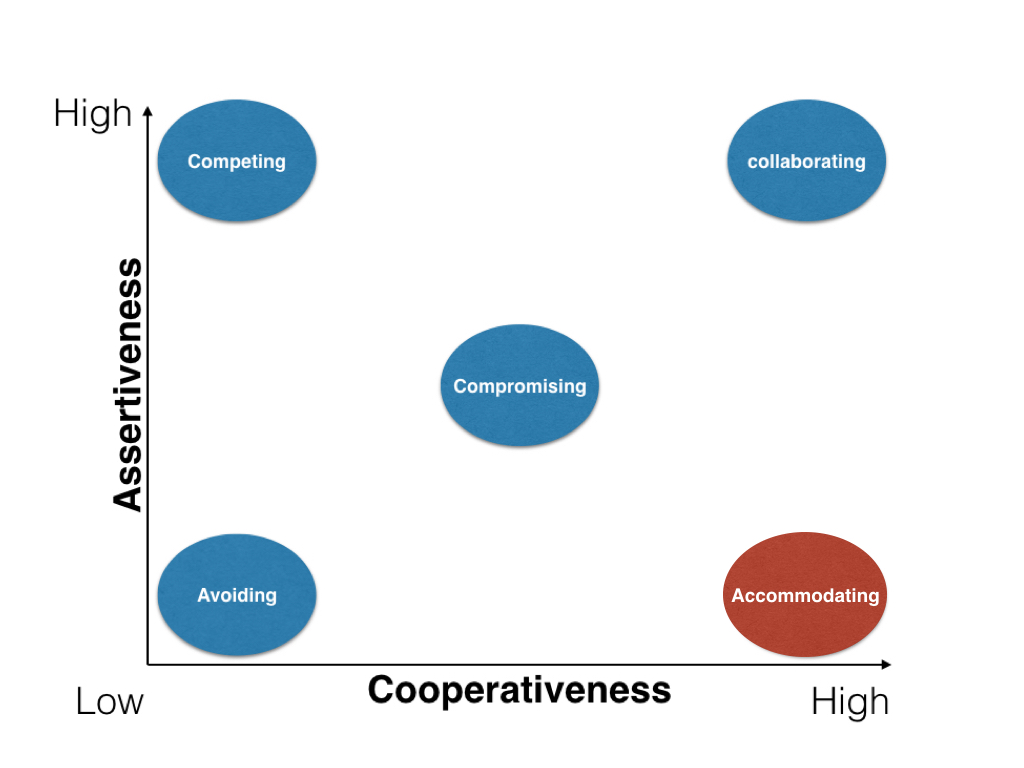Table of Contents |
Recall that accommodating is one of the five conflict resolution styles in which one party sacrifices his/her own needs in order to help meet the needs of another.
As a style, accommodating is:

Let's take a look at some examples of accommodating:
EXAMPLE
You have plans over the weekend to go out with a friend, and there's a movie you'd really like to see. You've been looking forward to seeing it, but your friend really wants to see something else. You say, “Okay, we’ll go to the movie you want to see.” You’re really disappointed because while the movie was fine, you didn't really want to see that movie. It seems like you're always going to see what somebody else wants to see.EXAMPLE
You're in a team meeting at work. The team is divvying up some roles, and the leader asks, “Who will be the secretary and take minutes for this meeting?” Nobody wants to do that, so there are no volunteers. You start to feel a little uncomfortable in the silence, so you say, “I’ll do it.” Everybody smiles and says, “Thank you so much. You always do it.” You are always offering to do the things other people don't want to do.This particular style of conflict has, as all styles do, both positive and negative outcomes.
A positive outcome is a resolution to a conflict that a party perceives as meeting his or her needs and/or reducing the likelihood of further conflict.
A negative outcome is a resolution that the party perceives as not meeting his or her needs and/or increasing the likelihood of further conflict.
Return to the movie scenario and the team meeting scenario from above:
| Scenario | Positive Outcome | Negative Outcome |
|---|---|---|
| Movie scenario | Your friend always enjoys hanging out with you because you like to do what she likes to do. | You never get to do what you want to do. You feel like you’re always doing what someone else wants to do. |
| Team meeting scenario | Your coworkers see you as a team player. You'll always pitch in and do what's needed to support the team. | You feel like all of these tasks are always falling on you, but you don't know how to say no. |
Source: This tutorial was authored by Sophia Learning. Please see our Terms of Use.